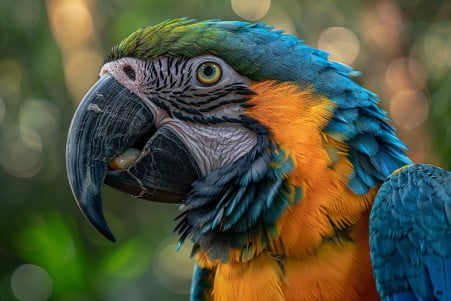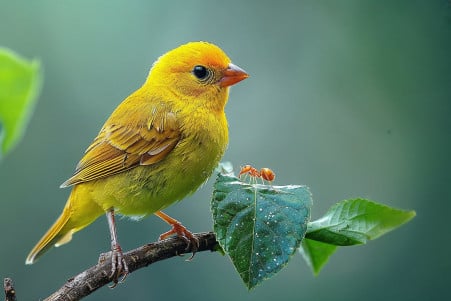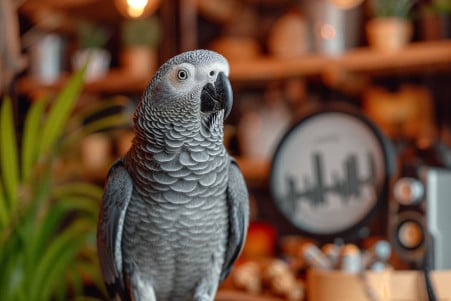Bird Tongues: From Basic Anatomy to Evolutionary Marvels
14 May 2024 • Updated 13 May 2024

While it may seem like birds don't have tongues, the truth is that they do, and their tongues are as varied as their diets. Bird tongues are made up of bone, cartilage, and muscle and are used for everything from helping birds get food to aiding in vocalization and drinking. From the long, tubular tongues of hummingbirds to the short, spiky tongues of woodpeckers, bird tongues are incredibly diverse.
This article will cover the most recent research on bird tongues, including studies that have looked at the anatomy and function of bird tongues in a variety of species. This research has shown how the evolution of the tongue has helped birds eat the foods and engage in the behaviors they need to survive in their environments. This article will help you understand these adaptations and marvel at the evolution of birds.
Do birds have tongues?
Tongues in Action: Feeding Adaptations and Behaviors
The diversity of bird tongue form and function is a testament to the wide variety of ecological niches and food sources that birds have exploited. For example, nectar-feeding birds such as hummingbirds have long, tubular tongues that can be extended deep into flowers to efficiently sip nectar. As explained on Laura's Birding Blog, the tongues of hummingbirds can extend and retract up to 13 times per second, and their grooved tips help capillary action draw nectar into the tongue.
Many woodpeckers and other insect-eating birds have evolved long, sticky, barbed tongues that can be extended well beyond the tip of the beak to capture prey from deep crevices. As outlined in a paper from PMC, the hyoid apparatus allows the tongue to be extended and retracted, which enables a variety of food-manipulation behaviors. For example, the Northern Flicker uses its barbed, adhesive tongue to extract insects from deep tunnels.
Ducks, flamingos, and other filter-feeding birds have tongues with lamellae - comb-like structures that aid in filtering food particles from water. These tongue adaptations, combined with behaviors such as the piston-like tongue movement of flamingos, make for highly effective exploitation of aquatic food sources. From nectar-feeding to insect-eating to filter-feeding, bird tongues are a testament to the power of evolutionary adaptation in a wide variety of ecological niches.
Evolutionary Origins: From Dinosaurs to Modern Birds
The variety of bird tongues can be explained by their dinosaur ancestors, which had relatively simple, short hyoid bones and limited tongue mobility. As reported by The University of Texas at Austin, the hyoid bones of most dinosaurs were like those of alligators and crocodiles - short, simple and connected to a tongue that was not very mobile.
Yet, as birds evolved and diversified in different environments and with different feeding strategies, their hyoid bones became more elongated and complex, allowing for more tongue mobility. This can be seen in the discovery of extinct bird species like Brevirostruavis macrohyoideus, which lived at the same time as the dinosaurs about 120 million years ago. As described in Sci.News, this early bird had a bony tongue that was almost as long as its head, showing the early development of this trait.
The evolution of the avian tongue is connected to the transition from hypercarnivory to other feeding ecologies and the development of flight. As explained in a study published in PLOS ONE, these factors likely led to the need for more tongue mobility and function. The study of the fossil record and the comparison of the tongues of modern and extinct species can help scientists learn more about the incredible evolution of bird tongues.
Avian vs. Mammalian Tongues: Differences in Structure and Function
Despite the presence of a tongue in both birds and mammals, the structure and function of the organ are quite different due to the separate evolutionary paths of these two groups. Mammalian tongues are muscular and highly innervated, covered in thousands of taste buds that help animals detect different flavors and textures. According to Ogaclicks, birds have bony tongues with fewer taste buds, which are primarily used to help birds detect poisonous or otherwise harmful foods.
The variety of bird tongues is a direct result of the many different ways birds have adapted to feed themselves, from seed manipulation to nectar sipping to catching insects. As reported by BirdTipper, woodpeckers and other insect-eating birds have evolved tongues that are sticky and barbed, allowing them to extend far out of the beak and catch prey in the crevices where it hides. On the other hand, nectar-feeding birds like hummingbirds have long, tubular tongues that can reach deep into flowers.
These differences help explain how the tongue has evolved to meet the needs of different animal groups, and also show how adaptable birds have been in evolving to meet their own needs.
Vocal Virtuosos: The Role of Tongues in Bird Communication
In addition to their different feeding strategies, bird tongues are also important for vocalization and communication in a number of species. Parrots and songbirds use their tongues to shape and modulate the sounds made by their syrinx (voice box), which is similar to how humans use their tongues to speak. As noted by Indiana Public Media, even the smallest changes in a parrot's tongue position can change the quality and formants of their vocalizations, which is one of the reasons these birds are such good mimics.
This kind of lingual articulation in bird vocalizations is an example of convergent evolution, since it's evolved separately from the role of the tongue in human speech. As reported by Nature News, the ability to make formant-like sounds with the tongue is probably the basis for the parrot's complex "language" and vocal mimicry. A Current Biology paper also found that lingual articulation is likely important for the parrot's natural vocalizations, not just their ability to mimic.
Learning about the role of tongues in bird communication helps us appreciate the complexity and flexibility of avian vocalizations, and it's yet another example of the wonders of bird evolution.
Conclusion: The Wonders of Bird Tongues
Bird tongues are amazing organs that demonstrate the incredible diversity and adaptability of avian evolution. From the long, tubular tongues of nectar-feeders to the barbed, sticky tongues of insect-eaters, these adaptations have allowed birds to occupy a wide range of ecological niches.
The evolution of bird tongues, which can be seen in the hyoid bones of modern birds, can be linked to the feeding strategies of their dinosaur ancestors. As birds adapted to new environments and feeding strategies, their hyoid bones became more complex and elongated, which enabled greater tongue mobility. This is shown by the discovery of extinct bird species like Brevirostruavis macrohyoideus, which had a bony tongue that was nearly as long as its head.
In addition to feeding, tongues are also important for bird communication, and some birds have tongues that can articulate in ways that are similar to human speech. For example, parrots use their tongues to shape and modulate the sounds that are produced by their syrinx, which is one of the reasons they are such good vocal mimics. The lingual articulation of bird vocalizations is an example of convergent evolution, as it evolved independently from the tongue's role in human speech.
The anatomy, function, and evolutionary history of bird tongues are all fascinating topics that provide a deeper understanding of the wonders of avian adaptation.


